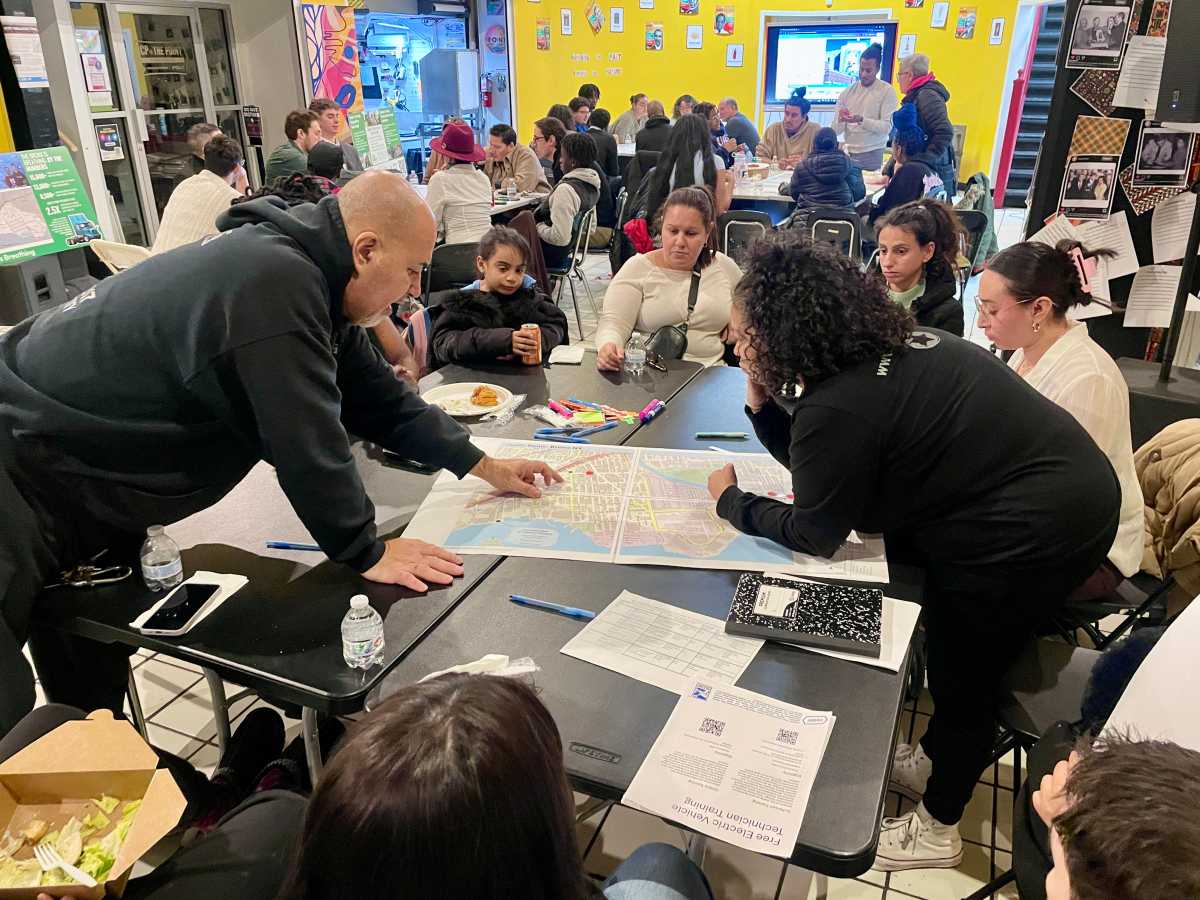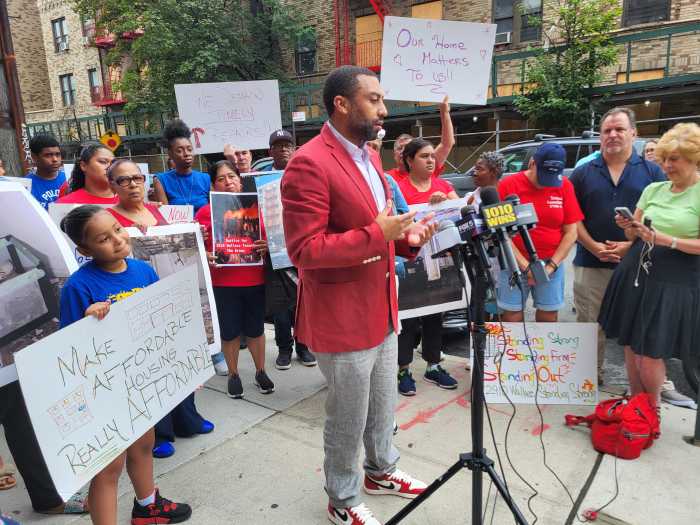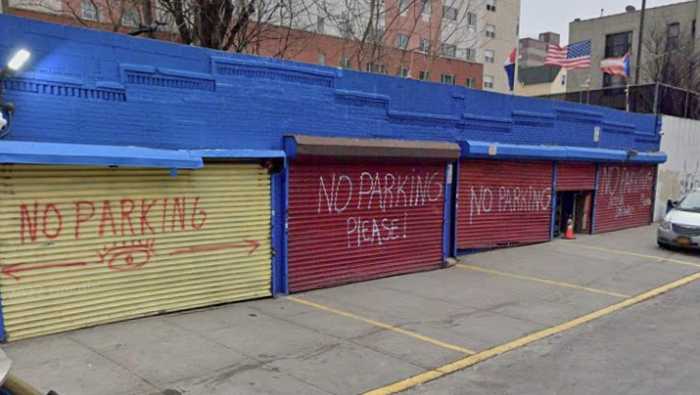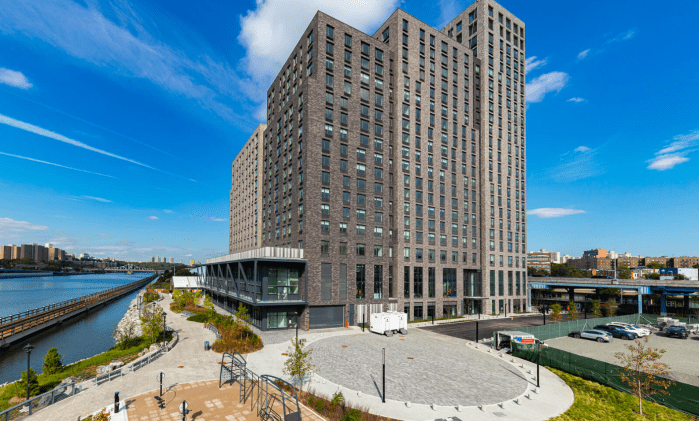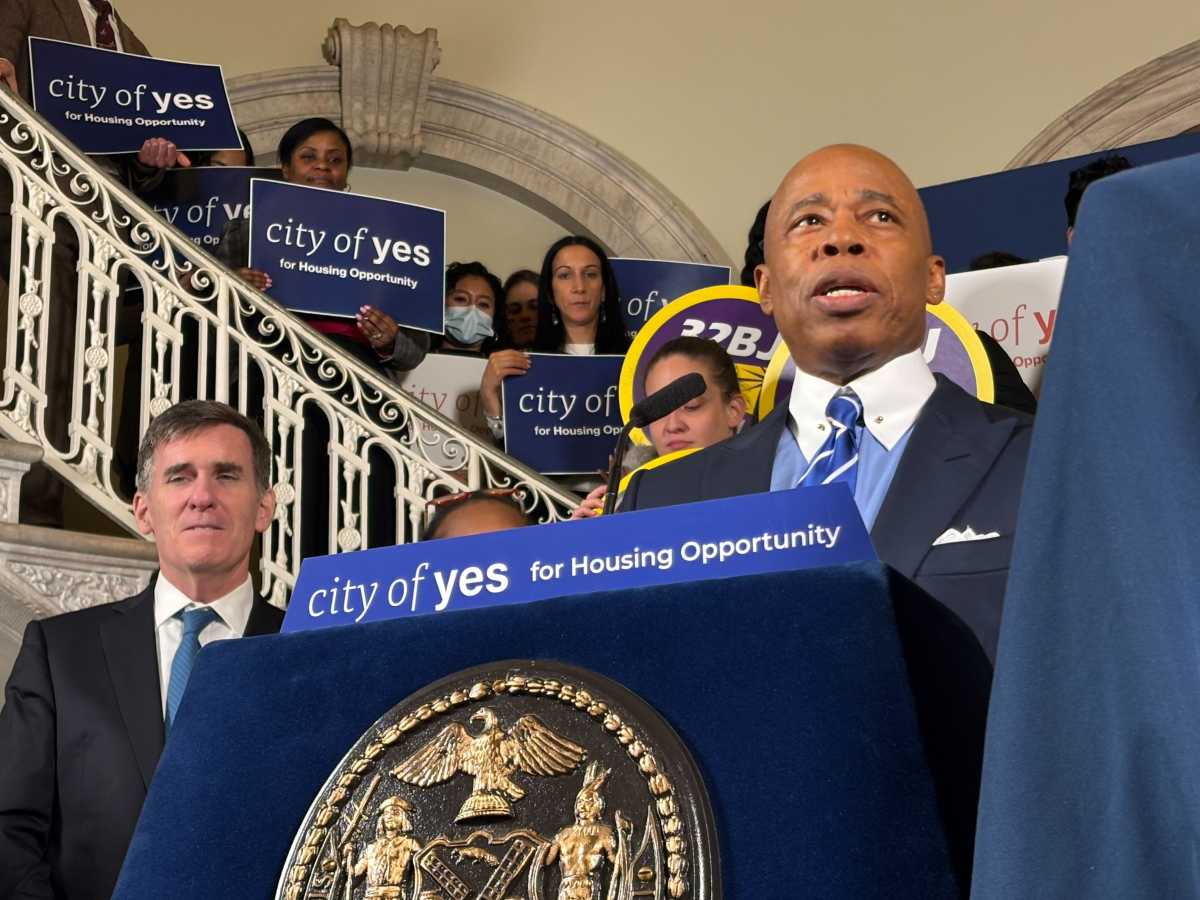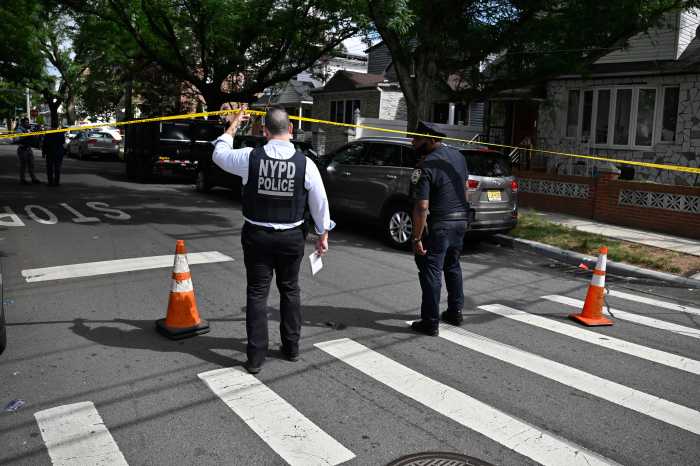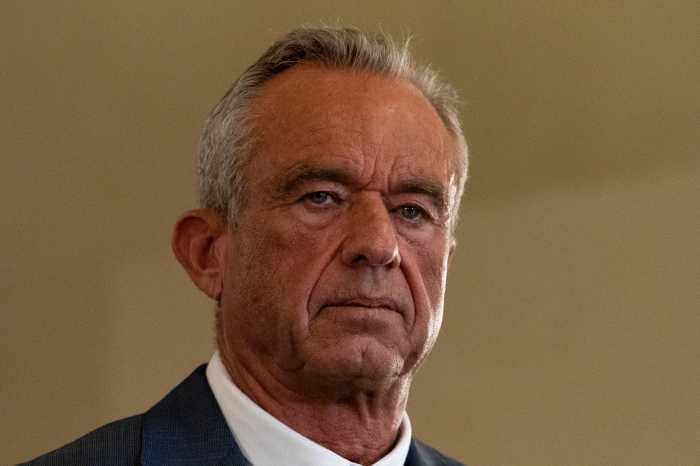Bronxites living in or around Hunts Point gathered Monday to brainstorm possible locations for electric vehicle (EV) charging stations in the neighborhood.
The Point Community Development Corporation (CDC) hosted the last of three Community Listening Sessions, where residents, environmental advocates and other stakeholders discussed what was important, and feasible, for the community’s future efforts to transition to zero emission transportation.
The sessions are part of the ongoing effort by the state to meet sustainability goals set out in the 2019 Climate Leadership and Community Protection Act (Climate Act), which requires New York to cut greenhouse gas emissions 40% by 2030. For transportation, the Climate Act set the goal of transitioning 30% of medium and heavy duty trucks to zero emissions vehicles by 2030.
Dariella Rodriguez, Director of Community Development at The Point CDC, led the session and explained to participants why it was important to be vocal about what will, and won’t, work for the community.
“This stuff is coming to our neighborhood regardless,” Rodriguez said. “It’s going to happen, and this is an opportunity for us to actually say, ‘no, yes, maybe so, and concerns.’”
Attendees separated into groups, each guided by a facilitator from The Point CDC, to map out where they think electric vehicle charging stations would best serve Hunts Point. Each group looked at charging stations for personal vehicles but also chargers for the fleets of trucks that operate out of the warehouses near the water.

The planning sessions will help officials develop the infrastructure needed to support electric vehicles, aiming to reduce the severe pollution caused by approximately 15,000 diesel trucks passing through Hunts Point daily. This heavy traffic has led to high rates of respiratory illness, earning the neighborhood the nickname “Asthma Alley.”
Environmental advocates at the Point CDC, as part of a coalition of Hunts Point community organizations called Bronx is Breathing, organized the event as part of its larger effort to replace the air polluting diesel trucks with zero emission medium and heavy duty trucks. But before entire fleets of electric trucks can be deployed, the coalition and the community has to set up charging stations to support them.
Community members who have long been advocating for cleaner air, supported the solution and came out to offer their input on where EV chargers make the most sense. Geraldine Williams, a special education teacher who has lived in Hunts Point for 30 years, told the Bronx Times that as long as charging stations were placed thoughtfully, that she was excited for the possibility of less truck pollution.
“I’m all for it,” Williams said. “With all the asthma and the highway pollution, it will be good, especially for our kids.”
Participants sat around tables covered in huge maps of Hunts Point, using stickers, markers and post-it notes to mark places where charging infrastructure would make sense in the neighborhood, where they would not make sense and list any concerns or community needs for building out the charging stations.
Audrey DeJesus, who has owned a home in Hunts Point for 50 years, used a marker to draw the route that shipping trucks take around Hunts Point, providing a reference point for possible EV chargers.
“Technically they are supposed to follow this route,” Dejesus said. “We fought hard to have the trucks go this way so they avoid the residential streets.”
Community members echoed many of the same ideas. EV chargers for freight trucks should go into the parking lots or vacant lots in the Hunts Point warehouse district where the trucks park when they aren’t making deliveries. EV chargers for personal vehicles would be best placed in parking garages and at destinations like parks, restaurants and businesses.
The nearly universal concern was parking. Attendees warned against taking away street parking to install EV chargers, especially if charging stations for personal vehicles would not be the more powerful fast charging stations, which can charge an electric vehicle’s battery to 80% in 20 minutes to 1 hour.
Community members also questioned how much use EV chargers for personal vehicles would get in Hunts Point. As the poorest congressional district in the nation, many residents asked, “who can afford an electric vehicle?”
Bronxites interested in learning more about the efforts to transition to electric transportation and zero emissions can visit the Bronx is Breathing website or the Point CDC’s websites and sign up to be notified of upcoming events.

